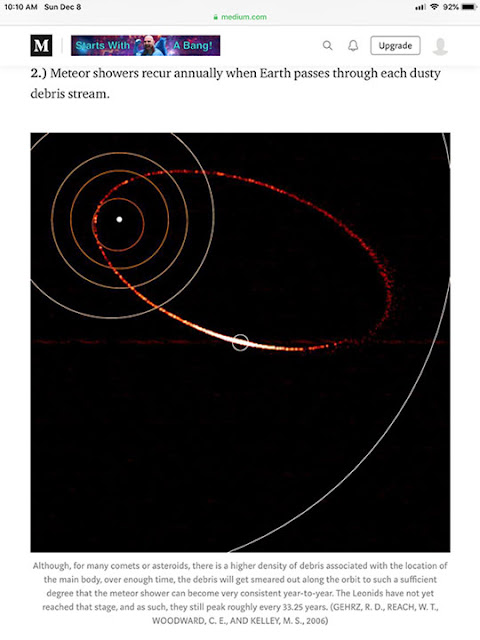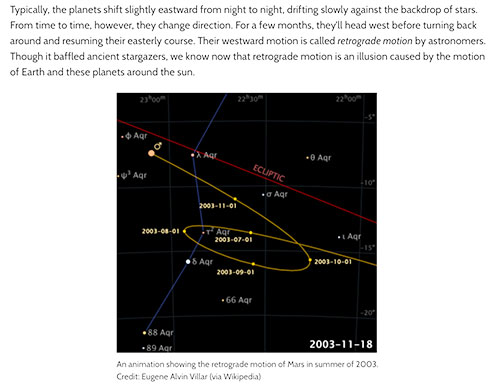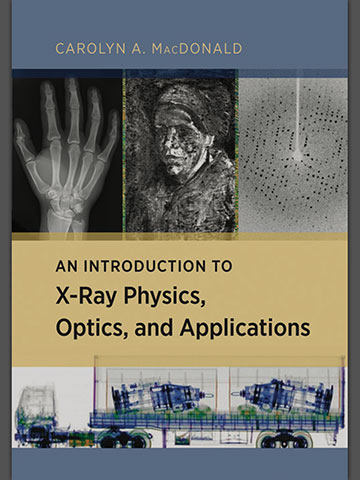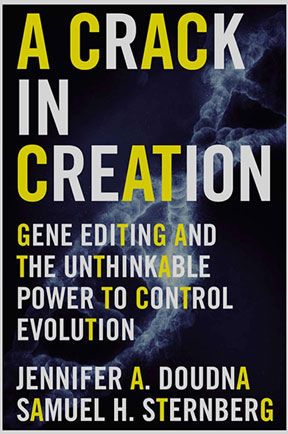Well after getting up early in the morning to catch Mercury, it is time to relax with some reading about the Leonid meteors and some uses of x-rays in archeology and hearing about exiting CRISPR gene editing tools by expert Jennifer Doudna.
First up, how many of you enjoyed the Leonid meteor shower peak which was just like 3 weeks ago now? Well, me as a lazy "astronomer wannabe" just choose not to stay up until the wee hours of the morning, but I enjoyed reading about them in Ethan Siegel's "It Starts with a Bang" article on them. If you are not already following Ethan you should consider adding him to your list to get some interesting astronomical news. For instance, I had not realized that the Leonids are remnants of the comet 55P/Tempel-Tuttle which is in a highly eccentric orbit with period of about 33 years.
 |
| Orbit of comet 57P/Tempel-Tuttle (Source: Ethan Siegel, "It Starts with a Bang") |
As the comet goes about the sun and gets close to the sun, a lot of material is evaporated and forms a long line of debris along the orbital path When this debris in its orbit crosses the Earth's orbit, the crossing velocity is many thousands of miles per hour and the debris heats up and lights up as it enters the Earth's atmosphere. More debris is present every 33 years and so those times, next up in 2033, should have spectacular meteor showers. Hmm, ok, get ready for 2033! Maybe even I will wake up to watch that meteor shower!
It is also interesting to examine the orbit of the comet as seen by Earth bound observers and we can see that we should see some effects like some type of retrograde motion here, too, just like we do with Mars.
 |
| Retrograde motion of comet 55P/Temple-Tuttle (Source: Wikipedia) |
You can check out how we see the retrograde motion of Mars in the following diagram. It is neat to go outside and watch Mars night after night and try to observe its motion across the night sky.
 |
| The retrograde motion of Mars is easily observable (Source: Wikipedia) |
If you are looking for more of the comet orbital parameters you can check out Wikipedia for all the other details. It's visual magnitude is reported to vary between something like m = 3 to m = 22 when it is the furthest from the sun.
 |
| Other astrophysical parameters for comet 55P/Tempel-Tuttle (Source: Wikipedia) |
Ok, enough of comets, lets look at bigger stones, not stones that fall to Earth, but stones that are arranged for human purposes, like those at Stonehenge. It's been almost 30 years since Resident Astronomer Peggy and I first walked around the stone circle, and the mystery of it all has always been of some interest, so when this latest edition of "Unearthed" on the Science Chanel on the "Ghosts of Stonehenge", we just had to tune in. The documentary covered some of the latest archeological findings about the people who built Stonehenge and why they built it and its history over the past thousand years. Check it out if you like this type of thing.
 |
| Great documentary on the latest Stonehenge archeological finds, including use of X-ray XRF (Source: Science Channel) |
Of special interest, to this astrophysicist wannabe, was the use of X-ray Fluorescence Spectroscopy to help identify where the stones used were quarried and where they were worked and carved. Debris from all of this work can be examined and traced back so that the rocks at Stonehenge can be identified with their place of origin. Pretty neat!
Now we are all mostly familiar with medical uses of x-rays technology and some also follow how observations of x-rays from astronomical sources tells us a lot about the processes that go on in distant nebulaes and other objects. But, when I saw the handheld scanner used in the Science Channel documentary, I had to find out more about the technology. You can see the type of handheld scanner, one of many types now available, in the image below. Hmm, now not really wanting to get close to an x-ray source, but at the same time, I thought it might be fun to have one of these handheld analyzers. When I checked out the manufacturers website and it said to request a quote if you wanted to buy an analyzer I knew that they were going to be very pricey. Yep, a search on Ebay found some models being sold for up in the $15,000 range. Nope, that is not going to be a piece of instrumentation found in this observatory!
 |
| Niton Handheld XRF Analyzer (Source: Thermo Scientific) |
It is interesting to look at what is inside the XRF handheld analyzer and Thermo Scientific explains how it works in the graphic below. The analyzer emits X-rays which impinge on the sample to be analyzed and then the received characteristic fluorescent x-rays from the sample can be used to determine what chemical elements are in the sample.
 |
| Internal system components of Niton XRF Analyzer (Source: Thermo Scientific) |
Hmm, it is hard to believe that this little handheld analyzer is big enough to have a typical x-ray source, like the vacuum tube typical design, with its own high voltage, say 70,000 volts. Some analyzers have a radioactive element as the x-ray source. The radioactive element is always on and so requires its own amount of shielding to protect the user and a mechanical shutter used when the analyzer is pointed at the sample. I didn't find out if this is how this particular analyzer works, but it just seems it might be the more practical way of making a portable analyzer, even though it needs heavy shielding.
We can also get a bit more into the details of X-ray Fluorescence physics as described in the graphic below. The sample is illuminated with a high energy, say 70 keV source, which tends to blast a core electron out of the atom. The cross section of the core atoms is much higher than the outer electrons so the probability is higher that a core electron will be ejected. At the same time, an electron from one of the higher orbitals falls into the opening created by the ejected electron. This in falling electron loses energy by emitting a x-ray photon. The energy of the photon is the energy difference between the outer electron shell and the inner electron shell, so it is directly related to the specific atom and its atomic structure. It is this relationship between the observed photon energy and the atomic source that can be used to identify which particular element emitted the photon.
 |
| Characteristic X-ray emission is specific to the element (Source: C. MacDonald, "Intro to X-ray physics..." |
The previous figure comes out of chapter 4 of Carolyn MacDonald's book, "An Introduction to X-Ray Physics, Optics and Applications. This is a great self study book for the astrophysicist wannabe. It has just the right amount of quantum mechanics and practical information about how x-rays are generated, imaged and detected.
 |
| Great self study book on x-ray physics (Source: C. MacDonald,"Intro to X-ray physics..." |
Lastly, the Distinctive Voices lecture series, at the Beckman Center in Irvine, had a leading expert in CRISPR gene editing technology, Jennifer Doudna, make a standing room only presentation. CRISPR is an acronym, where each letter is some microbiological term, which we will not repeat here, but which is the basis for human, and all life essentially, gene editing technology. Originally discovered in bacteria where it was an effective immunization technique which the bacteria used to recognize invading virus DNA and destroy it.
 |
| Jennifer Doudna speaks on CRISPR systems at Distinctive Voices lecture (Source: Palmia Observatory) |
The following cartoon, from Doudna's recent book, illustrates the process where a virus injects its DNA into a bacterial cell at which time the CRISPR cellular machinery picks off a snippet of 20 DNA base pairs by which the virus can be identified and then selectively deactivated.
 |
| CRISPR, discovered in bacteria, protects immunization against virus invaders (Source: J. Doudna, "A Crack in Creation) |
Jennifer Doudna was very optimistic, given the rapid growth of understanding and applying CRISPR machinery to human gene editing. The technology has evolved to the point now where in the next 5 years or so, the complete control of editing and removing or editing any portion of the human genome will be possible. This possibility enables the repair and damaged DNA and potential cure of genetic based diseases such as sickle cell anemia. At the same time, she stressed that the scientists recognize how the technology can be abused and are trying to put in place various protocols regulating future uses.
During the Q&A period, a questioner asked if the length of 20 base pairs was sufficient to enable the correct position in the DNA at which to cut and do the editing. She said that 20 base pairs is mostly enough, but that other safeguards have to be used to ensure that the correct position in the DNA is actually selected.
Let's look at what is possible with 20 base pairs. Since there are four possible amino acids that can be used in each portion of a base pair, this means that 20 base pairs can be arranged in 4 to the 20th power or 1,099,511,627,776 possible combinations. Wow, that is a lot of possible combinations!
It was sufficient when CRISPR was first selected as an evolutionary defense mechanism for bacteria. But now, for human genome editing it is a little bit on the short side. Jennifer said that they have tried to increase the number of base pairs but this has proved very difficult. It seems that just recognizing 20 base pairs was almost the limit that early bacterial systems could achieve and the cellular machinery to recognize a longer length of base pairs is very hard to accomplish.
So, if wondering out of the observatory and studying more of CRISPR technology and microbiology then it is hard Jennifer's book, "A Crack in Creation." I find it very readable and she helps explain some of the biological terms that might not be on the tip of the tongue of the typical astrophysicist wannabe. Thanks for an informative lecture and book, Jennifer Doudna!
 |
| Easy and informative read on the power of CRISPR gene editing (Source: Doudna+, "A Crack in Creation") |
Until next time,
Resident Astronomer George
Be sure to check out over 300 other blog posts on similar topics
If you are interested in things astronomical or in astrophysics and cosmology
Check out this blog at www.palmiaobservatory.com

No comments:
Post a Comment